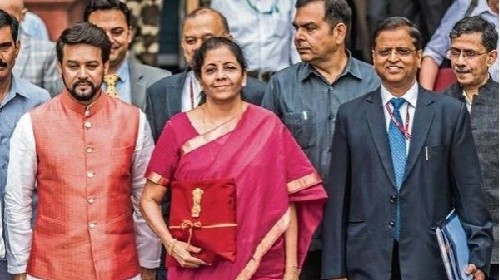Opinion - A framework for how a fiscal response should be crafted

Follow us Now on Telegram ! Get daily 10 - 12 important updates on Business, Finance and Investment. Join our Telegram Channel https://t.me/InvestmentGuruIndia
Download Telegram App before Joining the Channel
The Indian economy has been showing classic signs of an aggregate demand shock. Growth is below potential, core inflation is below target, and the current account deficit has shrunk. The broad consensus till recently was that monetary policy would do most of the heavy lifting to aid a demand recovery. The scope for interest rate cuts has reduced as headline inflation has drifted above the target set by the government for the Indian central bank.
The attention has once again shifted to fiscal policy. The problem is that India already has the highest consolidated fiscal deficit among all the major economies of the world, and a recent instalment of this column pointed out that several comparable Asian economies were growing faster than India with lower inflation as well as better public finances. The deficit targets announced by finance minister Nirmala Sitharaman in the July 2019 budget will almost definitely be breached this year. Yet, despite the obvious risks, the government may have to increase spending till private sector demand recovers. It will be a nuanced balancing act for Sitharaman when she unveils her second budget on Saturday.
What is less clear is how a fiscal response should be crafted. Here is a very simple framework to think about the challenge. There are four dominant questions. First, what is the gap between the rate at which the Indian economy can expand and the rate at which it is expanding right now? Second, what is the extent of the fiscal expansion that may be needed to bring economic growth close to potential? Third, to what extent will the Reserve Bank of India have to step in to ensure that the fiscal expansion does not create panic in the bond market at a time when government borrowings are absorbing almost all the financial savings of Indian households? Fourth, how large a fiscal expansion will Indian fiscal rules allow?
India is currently growing less than its potential growth rate, which itself has drifted down over the past decade. This output gap is devilishly difficult to estimate correctly, as is also the case with all the other unobserved macroeconomic variables that dominate modern macroeconomic analysis. However, it could be somewhere between 1.5-2.5 percentage points. That gap needs to be closed as far as possible with a stimulus to aggregate demand.
The extent of the stimulus will depend on an assumption about the size of the fiscal multiplier in India, or the extent to which economic output responds to one unit increase in the fiscal deficit as a percentage of gross domestic product (GDP). The multiplier question can itself be posed in different ways. What is the immediate impact, peak impact, and cumulative impact of a fiscal expansion on economic activity? Is the multiplier different when it is driven by increased revenue expenditure rather than increased capital expenditure?
Most empirical studies in India show that the multiplier from higher capital expenditure is far higher than the multiplier from revenue expenditure, especially when we think of the cumulative over a couple of years, rather than the immediate impact. Many studies show that India’s revenue expenditure multiplier is around one, because an increase in domestic demand on account of higher government consumption spending is partly negated by a reduction in capital spending by the government because of its budget constraint.
A back-of-the-envelope calculation shows that if one assumes a peak multiplier of three, then fiscal expansion of 0.5 percentage points of the GDP will be needed to close an output gap of 1.5 percentage points. This is an illustrative example. The actual numbers will change, depending on what the finance ministry’s assumptions of the output gap and the fiscal multiplier are. As Srinivas Thiruvadanthai of the Jerome Levy Forecasting Centre has pointed out, the multiplier could be far lower in an economy that is seeking to de-leverage.
But let us stick with this illustrative example for some more time. An extra fiscal expansion of 0.5 percentage points would mean additional government borrowing of around ₹1.1 trillion next year (or 0.5% of an estimated FY21 nominal GDP of ₹220 trillion). It is unlikely that the bond markets will take it in their stride. The RBI may have to increase bond buying in response, or aggressively expand its balance sheet through reserve money creation at a time when reserve money is already growing at twice the rate of nominal GDP. Arpit Gupta of NYU Stern argues that a combined fiscal plus monetary response may be needed to tackle the current slowdown.
One thing to look out for in the new budget is whether the government uses the “escape clause" in its legal fiscal commitments. The committee headed by N.K. Singh to review the Fiscal Responsibility and Budget Management Act (FRBMA) had written in its report that a government could escape the fiscal limit set by the law in case real output growth is at least three percentage points below the average of the past four quarters. It was so in 2009. It is not so now. Economic growth in the second quarter in the current fiscal year (at 5%) is 1.6 percentage points below the average of the previous four quarters.
It would be good for transparency if the finance ministry shares some of the analytics that go into its fiscal strategy.
















